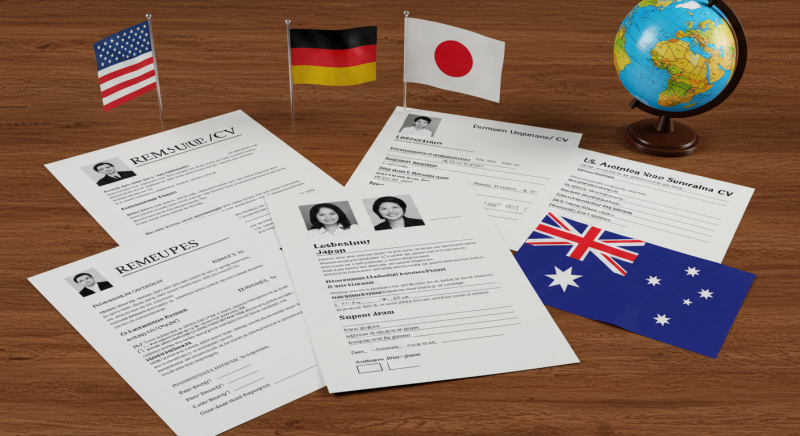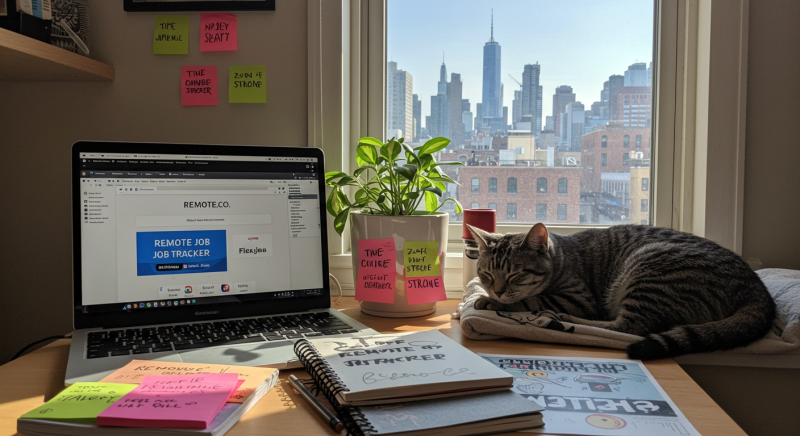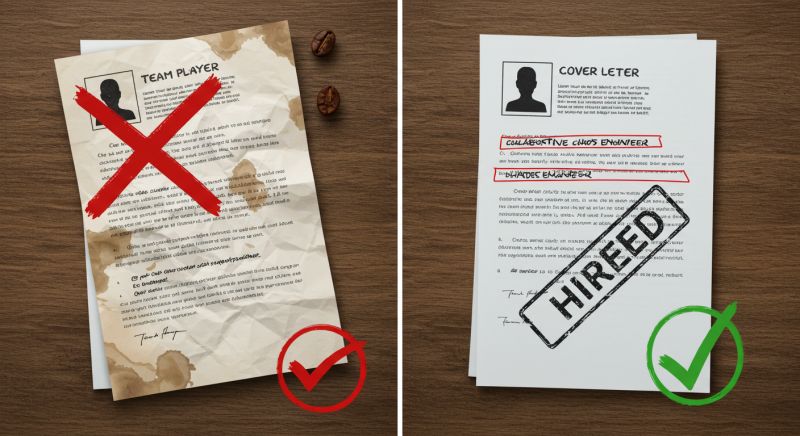Let me paint a picture you’ll recognize: You’re sitting at your desk, refreshing your inbox for the 47th time today, hoping this will be the day a recruiter finally replies. Your résumé feels like a message in a bottle lost at sea, and every “We regret to inform you” email chips away at your confidence. Been there? Oh, same. But here’s the good news: What if I told you the job hunt isn’t about luck—it’s about strategy? Buckle up, because we’re about to crack the code on where to look for jobs, decode country-specific CV formats, and master cover letter best practices—with a side of humor to keep you sane.

Key Takeaways
– Job Hunting Hotspots: Beyond LinkedIn lies a treasure trove of hidden job boards, niche platforms, and sneaky tactics.
– Résumé Rules by Country: A U.S.-style résumé in Germany might crash and burn. Learn what employers actually want.
– Cover Letter Hacks: How to write a cover letter that doesn’t put hiring managers to sleep (spoiler: emojis are not the answer).
Where to Look for Jobs: The Undercover Guide to Unlisting the Hidden Market
Forget the “spray and pray” method. Let’s talk strategy.
1. Traditional Job Boards (That Still Work)
Yes, LinkedIn and Indeed are the Walmart of job hunting—reliable but overcrowded. Here’s how to stand out:
– Indeed: Use filters like “posted 24 hours” to snipe fresh listings.
– LinkedIn: Turn on “Open to Work” (the green banner won’t haunt you—promise).
– Glassdoor: Stalk salaries and company reviews before applying.
Pro Tip: Smaller niche boards like Dice (tech) or Mediabistro (creative) attract fewer applicants. Less competition = higher odds.
2. The “Hidden Job Market”
Did you know 70% of jobs aren’t advertised? Here’s how to tap into them:
– Networking: Reach out to that 2nd-degree LinkedIn connection with a specific ask (“I’d love your take on X industry trend”).
– Company Websites: Bookmark “Careers” pages of dream employers. Many post roles internally first.
– Recruiters: Build relationships with industry-specific headhunters. They’re paid to fill roles—you’re their golden ticket.
3. Social Media: Where Memes Meet Careers
– Twitter/X: Follow hashtags like #JobOpening or #HiringNow.
– Facebook Groups: Join “Digital Nomad Jobs” or “Remote Work Europe.”
– TikTok: Yes, seriously. Companies like Google now post #CareerTok videos.
Job Search Platforms by Industry
| Industry | Best Platforms |
| Tech | Dice, AngelList, GitHub Jobs |
| Healthcare | Health eCareers, Nurse.com |
| Creative Arts | Behance, Dribbble, Mediabistro |
| Remote Work | FlexJobs, We Work Remotely, Remote.co |
Country-Specific Resume (CV) Formats: How Not to Get Lost in Translation
Your résumé isn’t one-size-fits-all. Here’s the cheat sheet:
United States & Canada
– Length: 1 page (unless you’re a CEO).
– Photo: Skip it (anti-discrimination laws).
– Sections: Summary, Experience, Skills, Education.
– Keywords: Optimize for ATS (Applicant Tracking Systems) with job description buzzwords.
United Kingdom
– Length: 2 pages max.
– Photo: Still a no.
– Sections: Add “Professional Development” (courses/certs).
– Bonus: Include a “Personal Statement” at the top.
Germany
– Photo: Expected (smile, but don’t overdo it).
– Details: Add marital status, nationality, and birthdate (yes, really).
– Format: Lebenslauf (CV) with exact dates (month/year) for roles.
Japan
– Rirekisho vs. CV: Use a rirekisho (standardized form) for most roles.
– Handwritten: Some traditional firms still prefer it (practice your kanji).
Australia
– Referees: List 2-3 contacts upfront.
– Casual Tone: Skip the stiff language—Aussie hiring managers love personality.
Table 2: Global CV Comparison
| Country | Photo? | Length | Unique Requirement |
|————-|————|————–|——————————–|
| USA | No | 1 page | ATS keywords |
| Germany | Yes | 2-3 pages | Personal details (birthdate) |
| Japan | Yes | 1-2 pages | Rirekisho format |
| Australia | Optional | 2-3 pages | Referee list |
Best Practices for Cover Letter: How to Write One That Doesn’t Suck
Let’s be real: Most cover letters are drier than toast. Here’s how to fix yours.
1. Ditch the “To Whom It May Concern”
– Find the hiring manager’s name: Use LinkedIn or company directory.
– Can’t find it? Try “Dear [Team Name]” or “Hello [Company] Rockstars.”
2. Tell a Story (But Keep It Snappy)
– Hook: Start with a relatable pain point. “Like you, I’ve spent hours debugging code that refused to play nice.”
– Connect the dots: Explain why your background aligns with their needs.
3. Avoid These Overused Phrases
🚫 “I’m a team player.”
🚫 “I’m passionate about [industry].”
✅ Swap with: “I thrive in collaborative chaos” or “I geek out over SEO algorithms.”
4. Proofread Like Your Career Depends on It (Because It Does)
– Tools: Grammarly + Hemingway App.
– Read it aloud: If you stumble, rewrite.
Cover Letter Do’s vs. Don’ts
| Do’s | Don’ts |
|———————————–|————————————–|
| Tailor to the job description | Use a generic template for all apps |
| Mention a mutual connection | Beg for the job (“I really need this”) |
| End with a call to action | Forget to include contact info |
Conclusion: Your Job Hunt Survival Kit
Let’s recap: The job market is a jungle, but now you’ve got a machete. You know where to look for jobs beyond the usual suspects, how to tailor your country-specific CV, and the secrets to a cover letter that gets replies. Remember:
– 80% of jobs are landed through networking (LinkedIn, 2023).
– Customized applications get 60% more responses (Jobvite).
– Humor and authenticity make you memorable—just keep it professional.
So go forth, apply smarter (not harder), and when you land that dream role, remember: You didn’t just find the job—it found you.
P.S. If this guide saved your sanity, pay it forward. Share it with a friend stuck in application purgatory. 🚀


